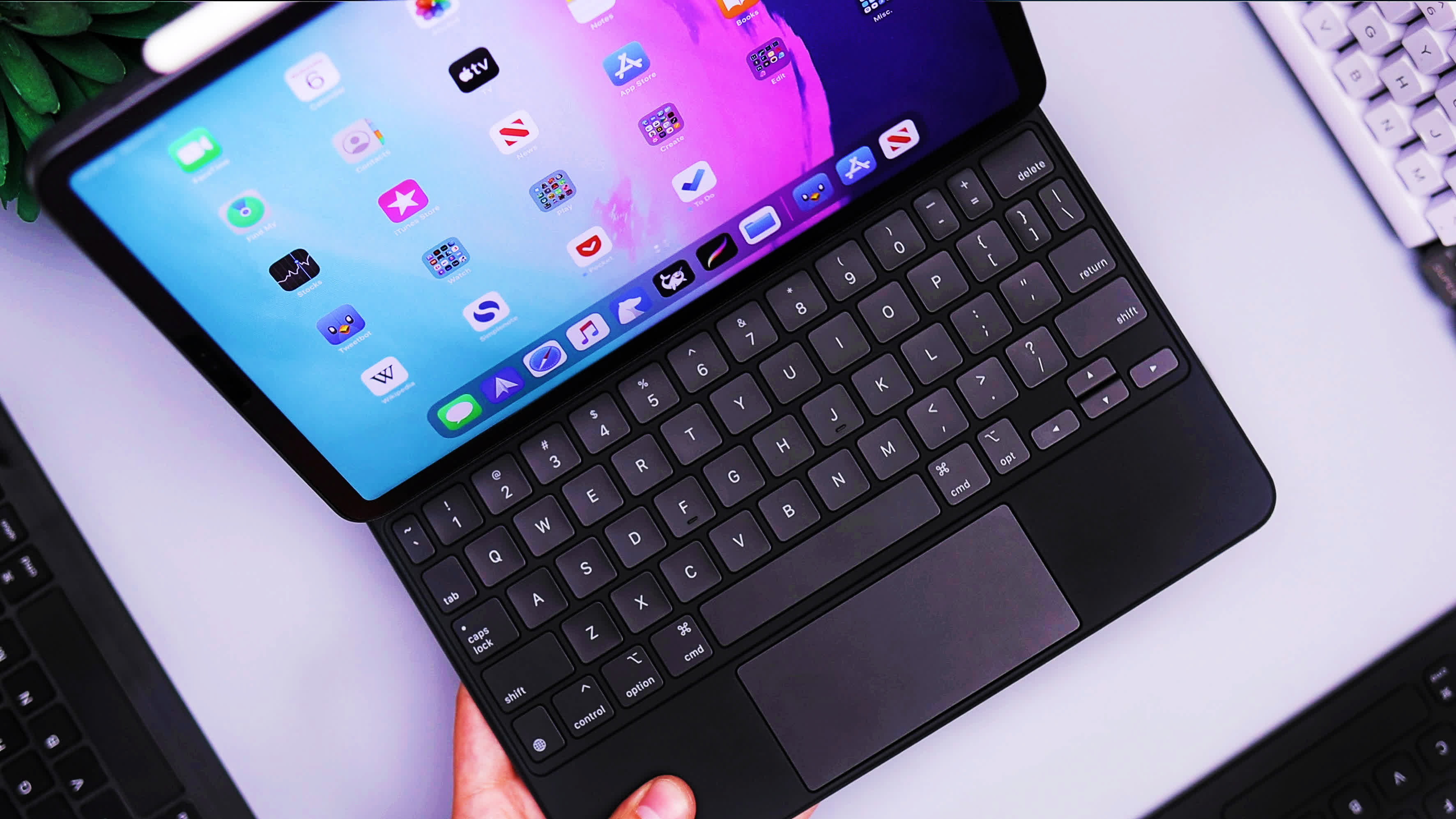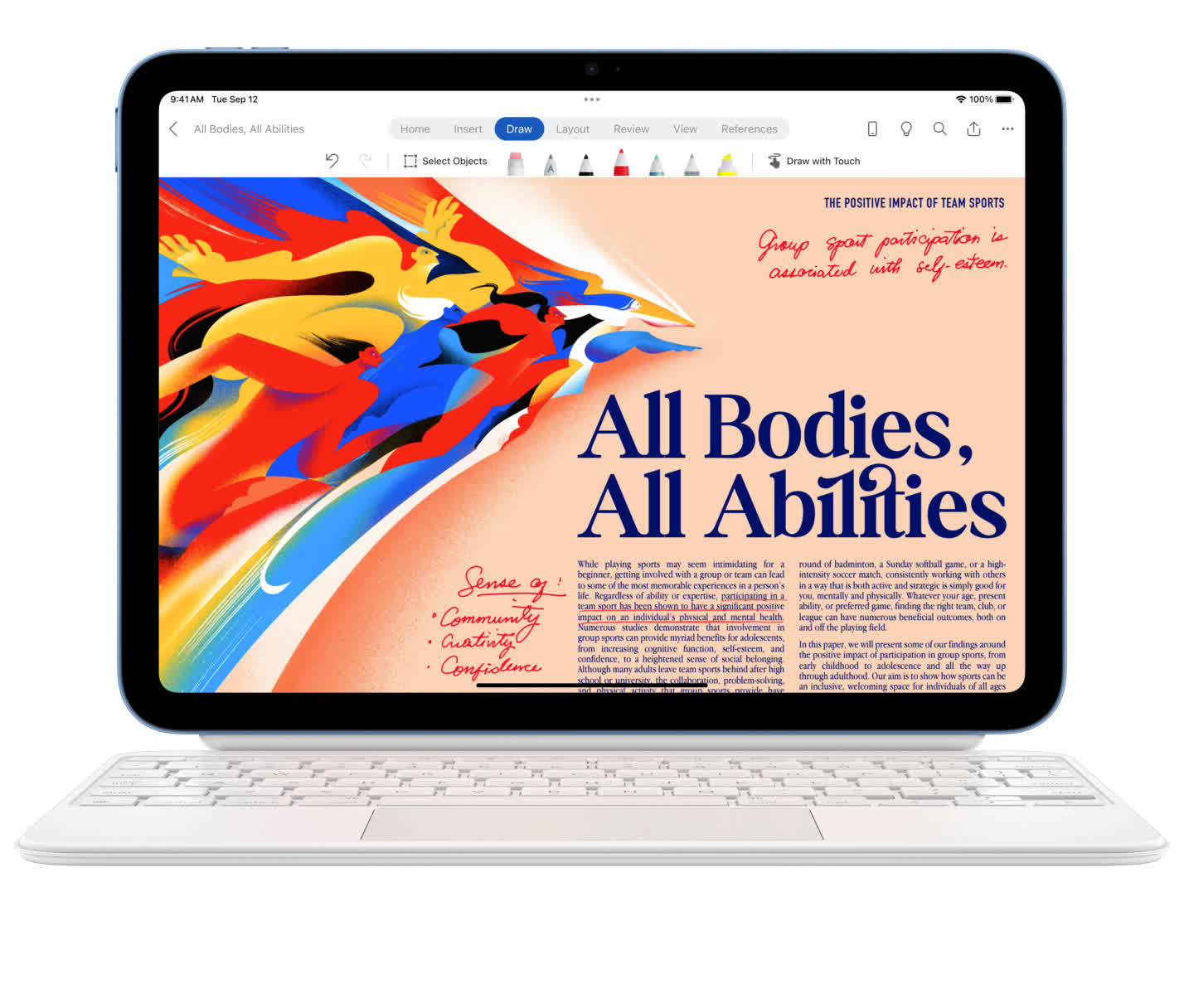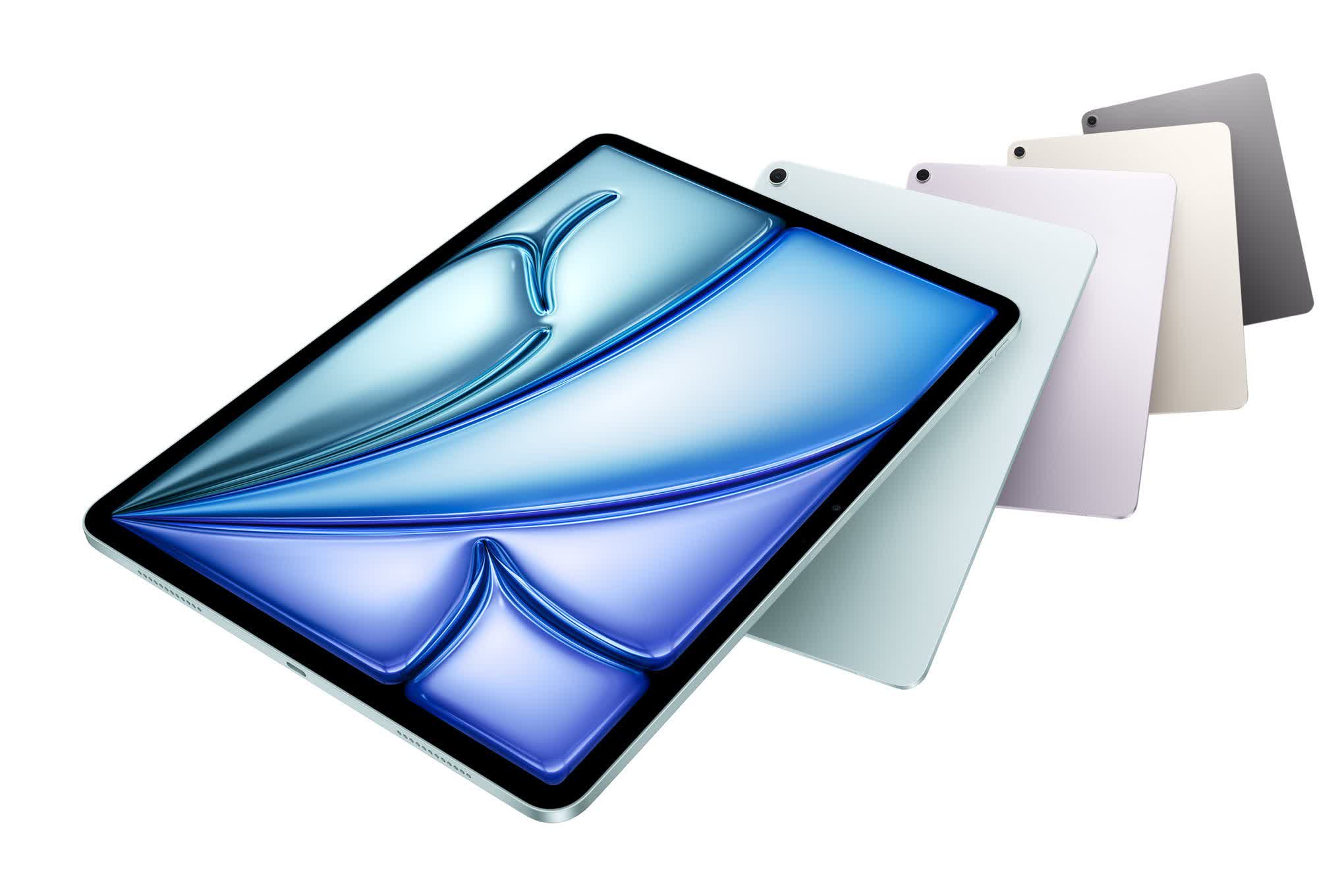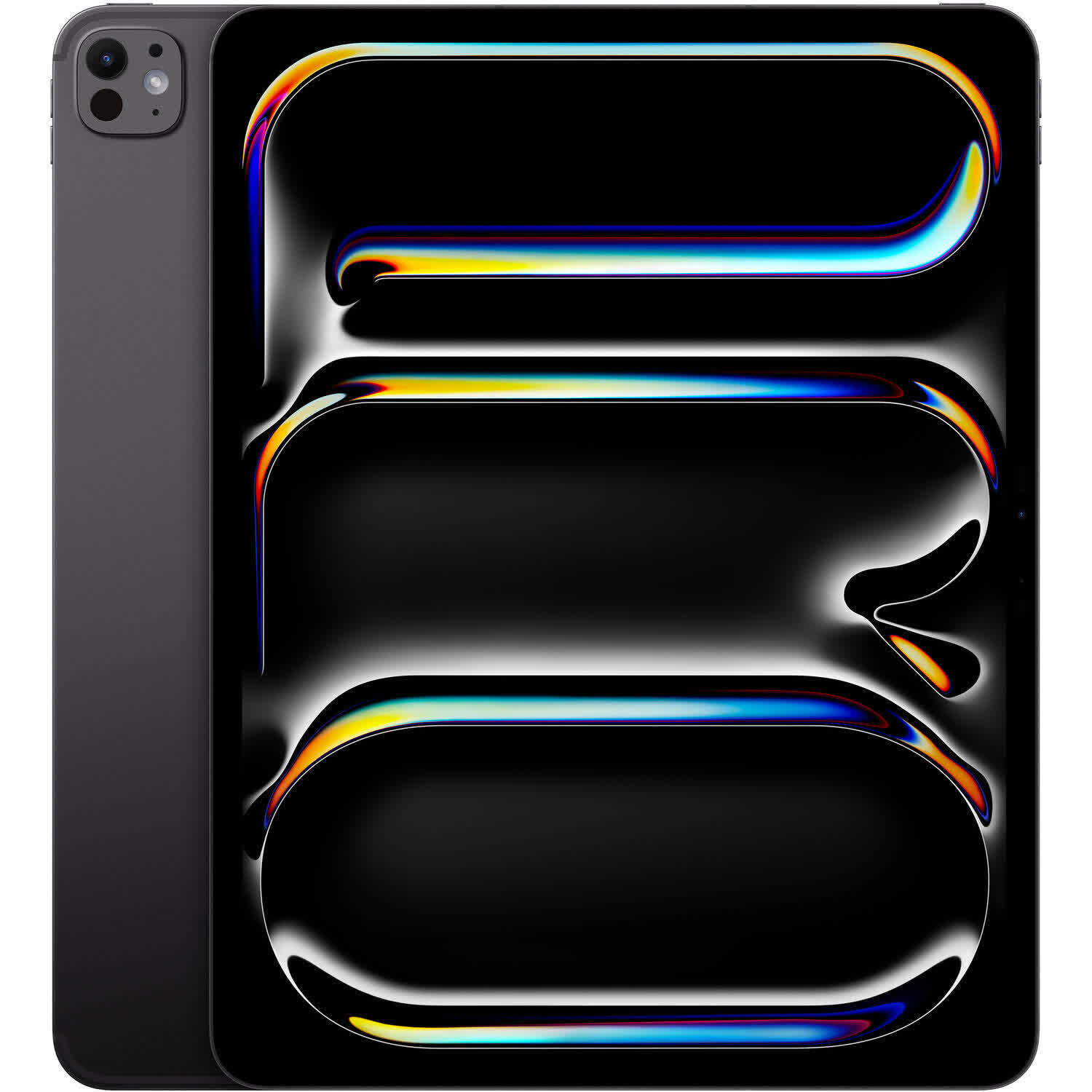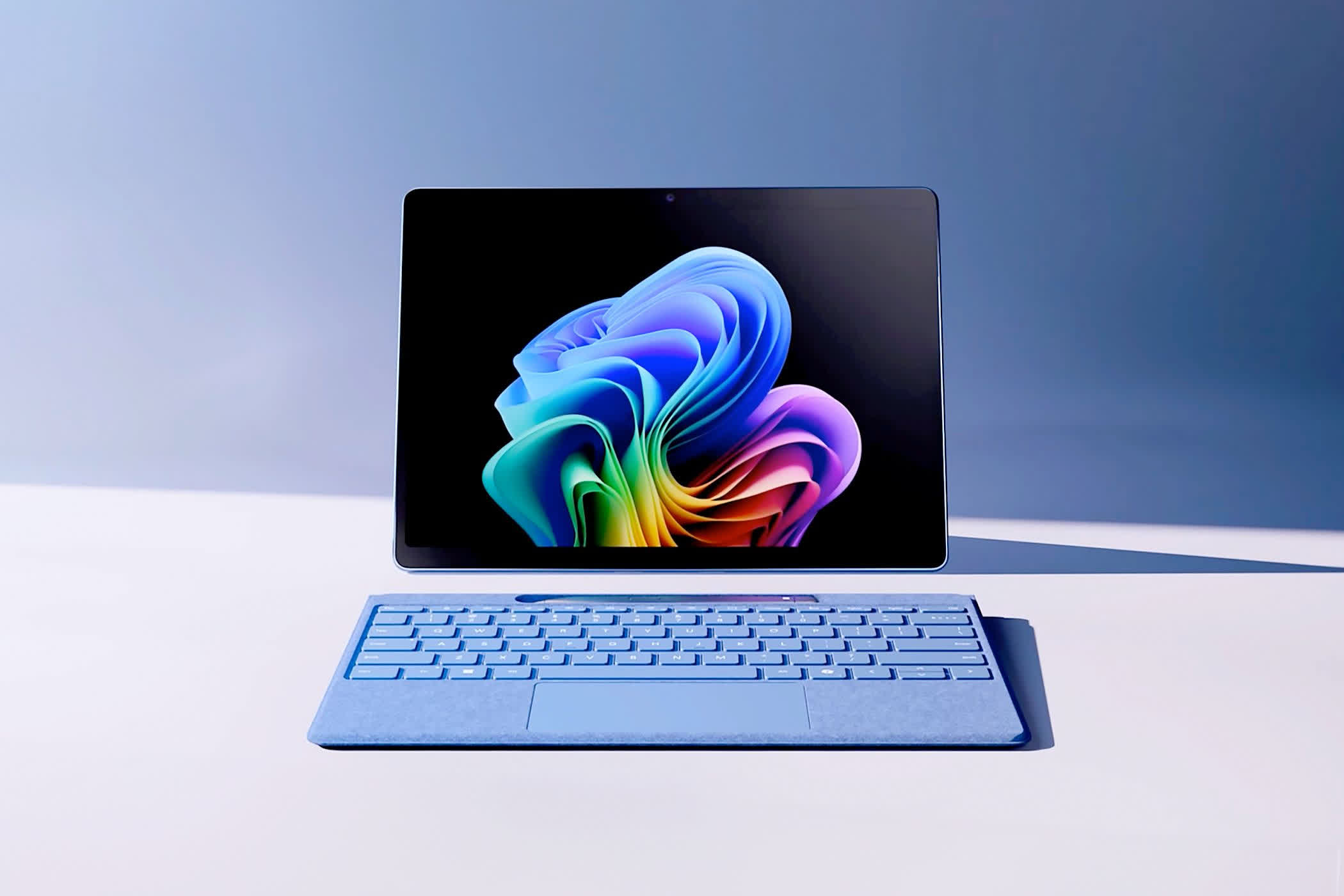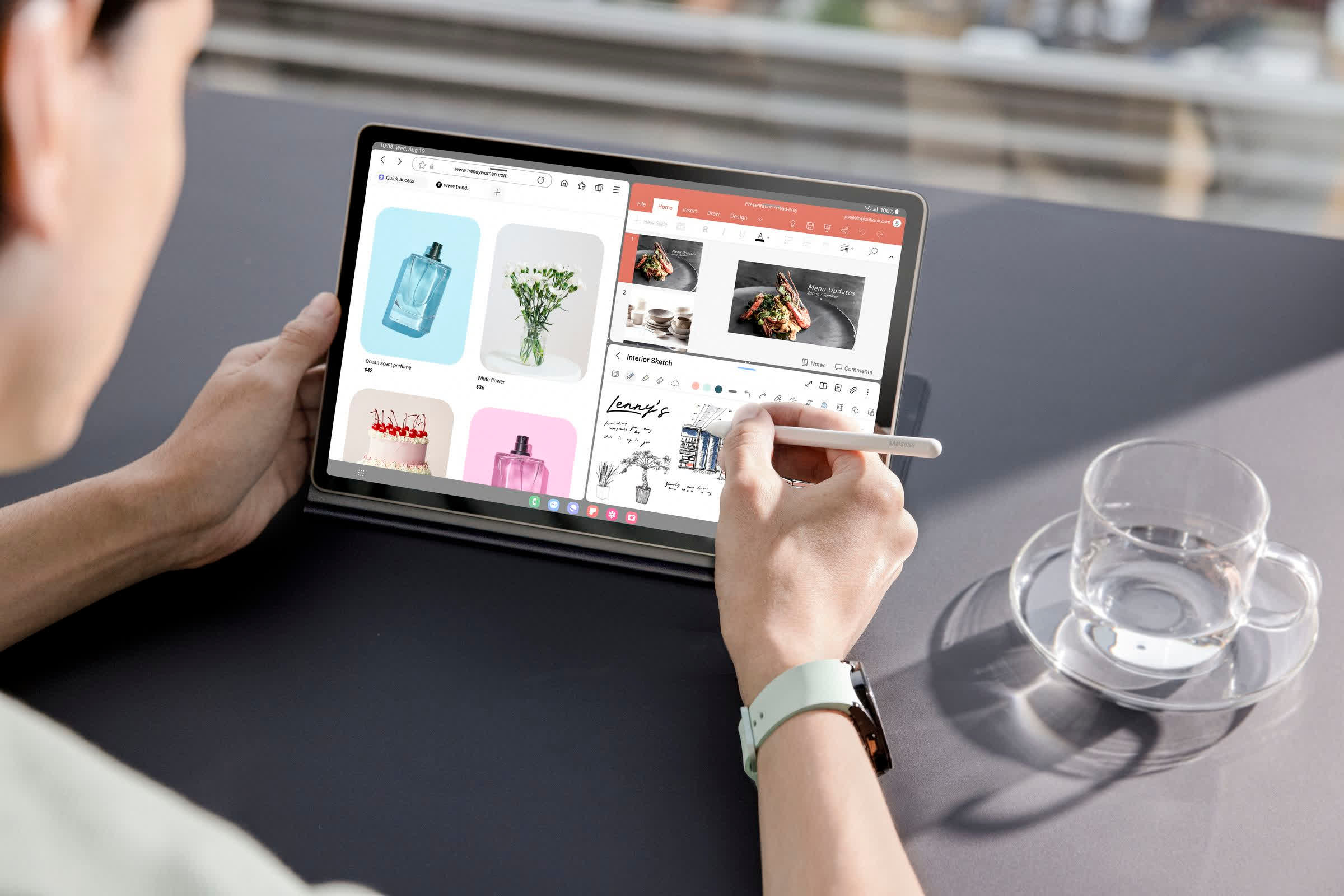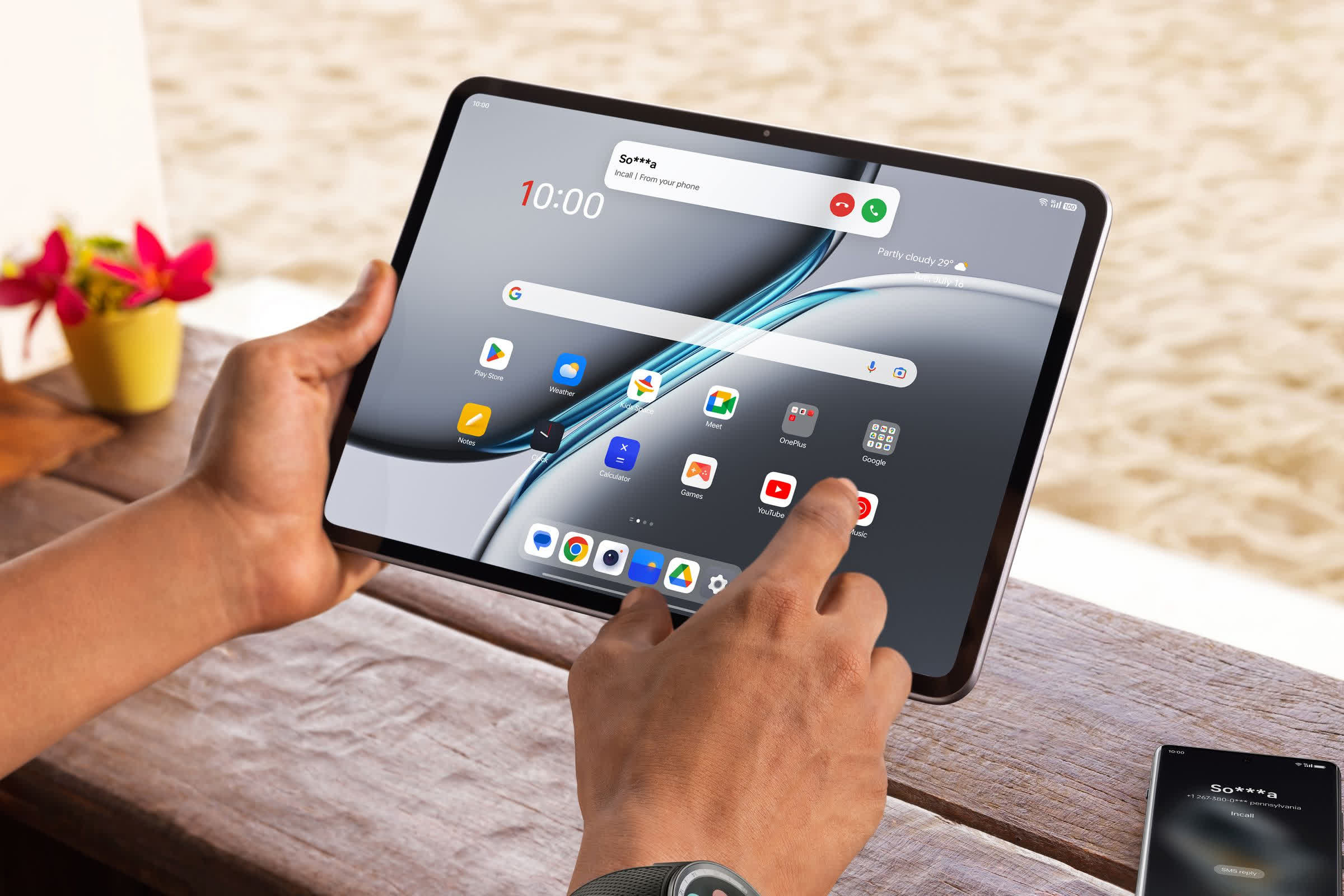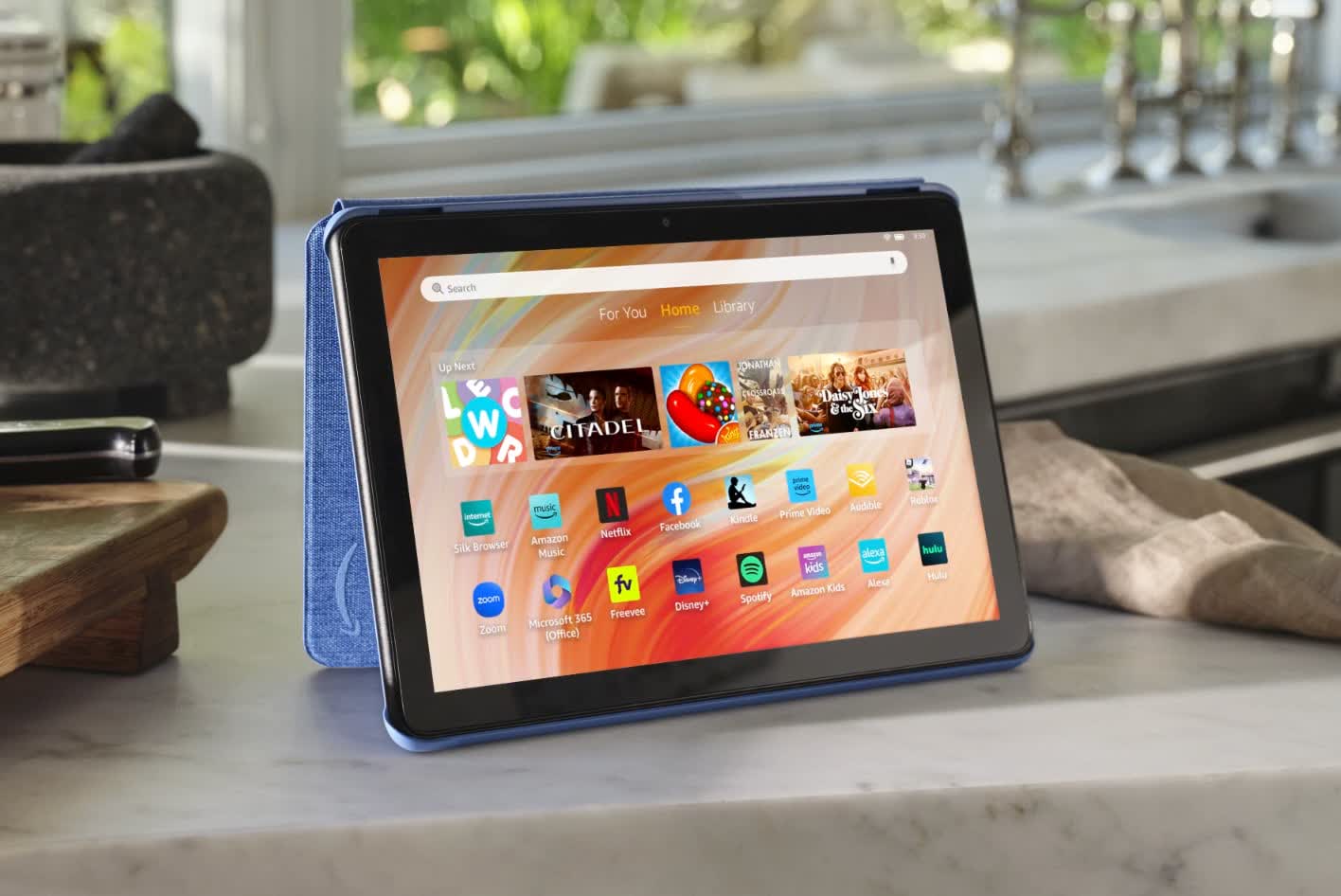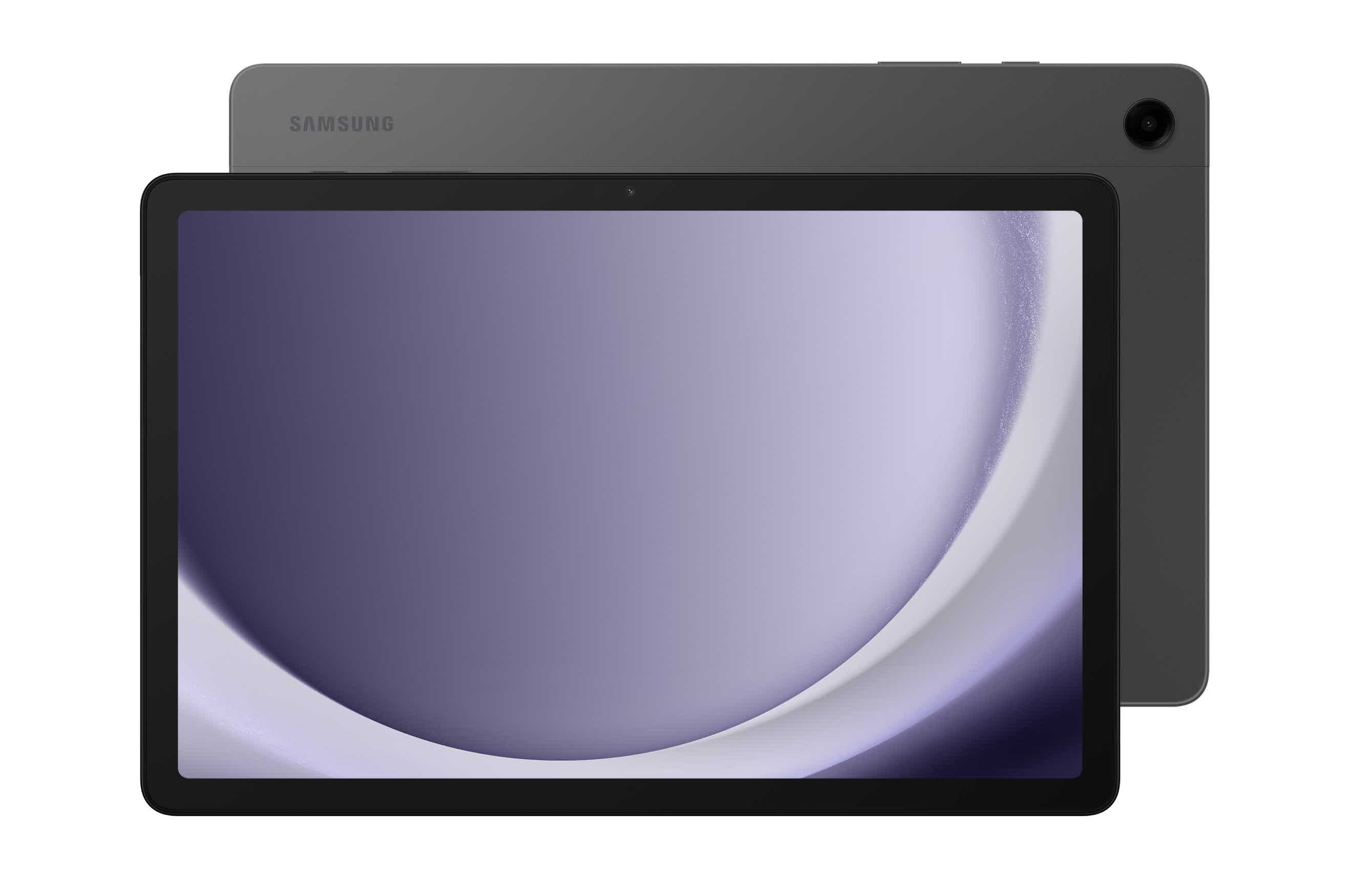If you haven't purchased a new tablet in recent years, now is an excellent time to consider it. Traditionally, tablets were known for offering battery life similar to a phone's and much larger displays. Today, some tablets are also as powerful as top-of-the-line laptops.
But what exactly defines a tablet? The presence of a touchscreen and the ability to operate without a physical keyboard are key features. By this definition, all modern smartphones could be considered tablets, but due to their sizes and aspect ratios optimized for handheld use, they are not the best companion devices for situations where a true tablet excels. So, what are the best tablets?
Whether you need a tablet for work, study, content consumption, or web browsing, our buying guide has you covered. We'll introduce you to the best tablets across various categories. Apple iPads remain the top choice for most users, so we'll tell you which models offer the best value, as well as suggest more budget-friendly alternatives and tablets based on Android and Windows.
- Best for Most
- Best of the Best
- Best for Productivity
- Best Android Tablets
- Best for One-Hand Use
- Budget Options
The Best Tablet for Most People
Apple iPad (10th-gen) or iPad Air

Great | Differentiating Features
Unbeatable combination of price, performance, and software.
Good | Most Have It
Slim bezels and USB-C.
Average | Competitors May Be Better
Lacks the display features of most iPad models.
Thanks to the only OS made specifically for full-sized tablets, the iPad line remains our default recommendation for most people. With many options available at various price points, the 10th-gen iPad is now selling for $300, replacing the 9th-gen device as our top choice for this price range.
The iPad sports a 10.9-inch Retina display offering 500 nits of brightness and the same 264 PPI (2360 x 1640) as the iPad Pros. While it lacks some features of the more expensive models, it's excellent for content consumption of all types.
Aside from the all-screen design, the 10th-gen device is a significant improvement over the previous version, especially if you want a tablet that doubles as a low-end laptop. It has the same 12MP front camera, now placed on the long edge, like a laptop rather than a phone, and it supports the Magic Keyboard Folio, which offers function keys and a trackpad.
The option of the $80 USB-C Apple Pencil also makes the latest version more appealing to some users. Although the new Pencil doesn't feature pressure sensitivity, it doesn't require an adapter like the older, Lightning-based Pencil.
The 10th-gen iPad is powered by the A14 Bionic SoC, offering decent CPU and GPU performance. While it's not the desktop-class M2 found in the iPad Air, it's sufficient for mobile games and apps. You also get iPadOS, the most complete tablet OS available. A brilliant combination of price, performance, and features makes this an easy top choice for media consumption.
iPad Air: A worthy upgrade
If you want an iPad with faster performance, more storage, or a bigger display, the Air is a good upgrade option. Starting at $559 for the 11-inch, 128GB version, it's not as affordable as the base iPad, but offers many of the Pro models' best features at a more reasonable price.
Some of the Air's advantages over the 10th-gen iPad include a fully laminated display with a wide color gamut and an anti-reflective coating, as well as support for the Pencil Pro ($120), which adds several drawing features and attaches magnetically to the side. The Air also boasts the more powerful M2 processor and 8GB of RAM, all wrapped in a thin and light design.
For $175 more, you can upgrade to the 13-inch version, with a 4:3 aspect ratio, 600 nits of brightness, and improved bass.
You can also upgrade the storage up to 1TB for less than you can with the iPad Pro (see below). If you're willing to pay a bit more, the iPad Air is a top choice.
Best of the Best
Apple iPad Pro M4

Great | Differentiating Features
More power than you'll need on the M4 chip. 120Hz refresh rate display. Face ID. Solid camera array. HDR capable OLED display.
Good | Most Have It
Impressive battery life.
Average | Competitors May Be Better
Expensive. Still not a direct laptop replacement. Pencil and Magnetic Keyboard sold separately.
The iPad Pro is the best tablet available on the market. It features the same ProMotion display as previous models, boasting a buttery-smooth 120Hz refresh rate, which makes scrolling a joy. The M4 chip outperforms the M2 in the iPad Air, even with one performance core disabled on the 256GB and 512GB models. Unlike the iPad Air, the USB-C connector supports USB4/Thunderbolt speeds.
For various professionals, the Pro stands out as the top choice. Graphic artists will find drawing on the 120Hz display uniquely satisfying. Interior designers looking to showcase potential designs for kitchens or offices will find the LiDAR feature indispensable.
If you are a video editor who works on the go, the Pro might be the device of your dreams. The tandem OLED display, with its 1600 nits of peak brightness (1000 for the entire screen), has no competition in this category of devices. You also get a 12MP front camera with TrueDepth and Face ID, and four speakers.
The magnetic Magic Keyboard for iPad Pro ($290 or $340 extra, depending on size) features a floating design and cantilevered hinges to support viewing angles of up to 130 degrees. This, along with the software integration, makes it a decent attempt at becoming a laptop replacement for casual users. Of course, the Pencil Pro is also supported.
The 11-inch iPad Pro starts around $920 for the Wi-Fi-only version with 256GB and goes up from there as you add storage and RAM. The same goes for the 13-inch version, which starts around $1,200 for the least expensive, Wi-Fi-only, 256GB version. You don't even want to know how much a maxed-out iPad costs, but for lovers of tablets, there's none better.
Best Productivity Tablet
Microsoft Surface Pro 11

Great | Differentiating Features
Performance and battery life similar to iPad Pro. Two Thunderbolt 4 ports. Replaceable SSD. Optional OLED. Stylus has haptic feedback.
Good | Most Have It
Gorgeous 120Hz display and long battery life.
Average | Competitors May Be Better
Stylus and keyboard cost extra. Many Windows apps don't have an Arm version.
With the Snapdragon X processor, Microsoft finally has a tablet with the performance and battery life that can compare to the iPad Pro – at least in apps with a native Arm version. You also get up to 32GB of LPDDR5 memory, two Thunderbolt 4 ports (but no USB Type-A), and a solid case with a kickstand that allows it to be used at different angles.
The 120Hz IPS display (2880 x 1920) uses the 3:2 aspect ratio we've come to expect from Surface devices, making it great for productivity work. The 12-core Snapdragon X Elite version has an OLED display, but don't expect iPad Pro-level brightness or vibrancy. You also get a 10-megapixel rear camera and a 1440p front camera for Windows Hello.
While the top-specced Surface 11 with the Snapdragon X Elite, 32GB of RAM, and a 1TB SSD can cost as much as $2,100, a model with a 10-core Snapdragon X Plus, 16GB of RAM, and a replaceable 256GB SSD (see upgrade recommendations) can be had for as little as $990.
The Slim Pen 2 charges wirelessly and provides haptic feedback, and the Signature Keyboard uses backlit mechanical keys. The downside is that, like with iPads, the keyboard and stylus cost extra.
Best Android Tablets
Samsung Galaxy Tab S8+ or Tab S9 or OnePlus Pad (2)

Great | Differentiating Features
Super AMOLED 120Hz display. Snapdragon 8 Gen 1 SoC. Included S-Pen. Android updates until 2027.
Good | Most Have It
Sleek design. Good battery life, cameras, and speakers.
Average | Competitors May Be Better
Android on tablets is still in the shadow of iPadOS. Performance can't match Apple's flagship.
Much like in the phone business, Apple's main rival in the tablet market is Samsung – well, except for Microsoft. If you can still find it new, the 12.4" Tab S8+ remains our top tablet recommendation for Android fans. It's currently discounted at $560 for the base Wi-Fi version with 8GB of RAM and 128GB of storage, making it bigger and cheaper than the 11" Tab S9.
Both the S8+ and S9 tablets feature a 120Hz Super AMOLED panel with vibrant colors and perfect blacks. They include face recognition, in-screen fingerprint readers, four speakers, USB 3.0 Type-C, and an ultrawide 12MP front camera.
One advantage over the iPad line is that Samsung's stylus comes included in the box, rather than requiring another outlay.
The Galaxy Tab S9 is still a good option thanks to its IP68 water and dust resistance. The S9 series is powered by the Snapdragon 8 Gen 2, which is a more powerful SoC than the Gen 1 chip in the S8, but still not in the same performance ballpark as the iPad Air's M2. The Tab S9 usually starts at around $750, but we've found some recent deals for as low as $670. You might consider paying a bit more for double the storage and 12GB of RAM, but depending on the day, that may put you too close in price to the Tab S9+.
If you prefer screen size and multitasking capabilities over portability and value, the 14.6" Galaxy Tab S9 Ultra is the one for you. It also has an additional 12MP front camera. The S9 Ultra starts at $1,050 with 12GB of RAM and 256GB of storage.
Regardless of your size preference, you'll have to deal with somewhat disappointing software. Android on tablets has improved, and you do get DeX mode, allowing compatible apps to work in windowed versions, but iPadOS remains superior overall.
A true alternative: OnePlus Pad
Many companies make Android tablets, but for most their key feature is being cheaper than the Galaxy Tab.
The OnePlus Pad is different in a very obvious way: it has a unique 7:5 aspect ratio, making it just 40% wider than it is tall. This makes it much more comfortable to use in portrait mode.
The 144Hz LCD display features true 8-bit color (10-bit with FRC) for accurate reproduction. At 11.61", it has the same number of pixels (2800) as the S8+ in each line, and a rounded-up number of 2000 lines. With four speakers, face recognition, 67W charging, and an 8MP front camera, the OnePlus Pad is well-equipped for content consumption.
It's currently on offer for $480 with 8GB of RAM and 128GB of storage. It has an optional magnetic stylus for $70, and a magnetic keyboard with a trackpad for $100, but it wouldn't be our first choice for content creation.
The MediaTek Dimensity 9000 chip isn't as fast as the Snapdragon 8. Also, OxygenOS is a much lighter Android modification than One UI, meaning the OnePlus Pad will feel more like an oversized phone compared to the Tab S.
That can change with the OnePlus Pad 2, which was just released with the Snapdragon 8 Gen 3, 12GB of RAM and 256GB of storage. It's brand new, so you will want to wait for reviews, but if you need it urgently you can already order it for $550.
The Best Tablet for One-Hand Use
Apple iPad Mini 6

Great | Differentiating Features
A15 SoC is faster than the iPad 10th-gen. Pixel density is 326ppi. Support for 2nd-gen Apple Pencil. Easy to hold with a single hand.
Good | Most Have It
Long battery life. Sub-6GHz 5G speed support on the Wi-Fi + Cellular version.
Average | Competitors May Be Better
Keyboard support limited to Bluetooth.
Tablets smaller than 9 inches are typically budget devices with outdated hardware and older Android versions, but the iPad Mini is a notable exception. The iPad Mini outperforms the vast majority of tablets, regardless of size and although it's almost three years old, it features a modern design and will continue to receive software updates for years to come.
With a resolution of 2266 x 1488, its 8.3" display boasts the highest pixel density among all iPads (326 ppi) and the highest aspect ratio (just over 3:2). It is equipped with the A15 Bionic chip, which is faster than the iPad's A14 (the 10th-gen model we recommend here), and has 4GB of RAM.
That's not close to what the iPad Air offers, so we only recommend the Mini if you actually need the smaller size. The Wi-Fi + Cellular version supports sub-6GHz 5G speeds, similar to the iPad Air and Pro models. It also has the same ultra-wide 12MP front camera and 12MP wide rear camera.
The Mini doesn't support the Smart Keyboard or Magic Keyboard, but it does support the 2nd-gen Apple Pencil with wireless charging. The base model comes with 64GB of storage and Wi-Fi, and for an additional $150, you can get 256GB of internal storage.
Budget Options
Amazon Fire HD 10 or Samsung Galaxy Tab A9+

Great | Differentiating Features
Won't find anything better at this price. Good screen, speakers, and battery life
Good | Most Have It
USB-C
Average | Competitors May Be Better
Cameras are not the best. Very Amazon-focused. Limited apps
It's a case of buyer beware when purchasing a budget tablet. There are a ton of sub-$100 and even sub-$200 slates that simply aren't worth your time nor money. But Amazon's Fire HD 10, which runs the Android-based Fire OS, is a good option at $140 for the 32GB storage model (even though we've seen it go for as little as $80) – and you will want to pay the extra $15 to remove the ugly ads on the lock screen.
The latest iteration of the Fire HD 10 (2023 model) received a thinner and lighter design, a 5MP front camera, and support for a $35 pressure-sensitive, tilt-supporting stylus. Internally, it's similar to the previous model, with 3GB of RAM, 32GB and 64GB storage options (expandable up to 1TB via microSD), and a newer, but similar, 8-core processor, all of which are reasonable for the low price point.
With a crisp, bright screen and fairly loud speakers, the Fire HD 10 is a cost-effective device for those who use tablets sparingly for content consumption, or want something affordable for their kids.
It's even more useful if you have a Prime subscription. The Fire HD 10 features Alexa, allowing it to function like Amazon Echo devices. However, you can only access Amazon's App Store, so no Google services are available unless you're willing to sideload them.
Budget Android option
Samsung Galaxy Tab A9+
If you're looking for a tablet with a full-fledged OS and solid software support, the Samsung Galaxy Tab A9+ ($230 with 128GB of storage and 8GB of RAM, about $180 with lower specs) offers everything you need in a content consumption-focused tablet.
The 11-inch display (1920x1200) is vibrant and colorful, the speakers and battery life are excellent, and the build is sturdy.
Samsung's tablet also includes features typically found on more expensive models, such as facial recognition and 5G support on the LTE versions.
While the Snapdragon 695 SoC isn't as powerful as the entry-level iPad's A14, and the cameras aren't exceptional, the tablet is still cheaper than Apple's option, even with more storage.
